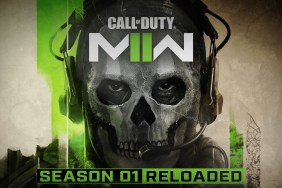If a Vampire dies outside of a castle, does it make a sound?
Historically a 2D affair, Castlevania games have found a sweet spot in adapting Metroid-vania style play to a newly designed castle time and time again. Sending the player backdashing this way and that never seemed to bore critics or gamers alike, but letting Castlevania stagnate would be a crime of undead proportions. Luckily for Konami, and for us, developers Mercury Steam have reanimated Castlevania's spirit in 3D like the corpse of Dracula, only this time without the suck.
[image1]In all honesty, comparing Lords of Shadow to other 3D Castlevania games is completely unfair. Castlevania 64 and the like were extremely limited by technology, and a large part of Castlevania's mythos is in the art style. Lords of Shadow delivers re-imagined enemies in spades, with imps, reanimated armors, lycans all appearing here with new life. The Titans themselves bring the towering, multistory bosses of 2D Castlevania into 3D space with startling faithfulness.
The environments also channel the ghosts of Castlevania's past, lightly in the beginning and heavily throughout the remainder of the story. In full disclosure, yes, there's a castle – it just takes about two hours to get there – but the way you see it is not like anything you've seen from Castlevania before. Lords of Shadow blows the doors wide open in art direction, yet in a way that will satisfy the series' loyalists with all the faith of a nun.
You're going to just put some faith in me on the story, because it takes a slow-burn approach, and it may not seem as though all your efforts are going to mount to anything… at least a first. Taking on the role of Gabriel Belmont is no easy task. With his wife murdered by evil forces, a prophecy that says he'll restore the link between Earth and Heaven as a member of the Brotherhood of Light, and accosted by creatures every step of the way, Gabriel has quite a journey ahead of him. Most of the story is atypical fantasy schlock – the fate of mankind, heaven, and hell, all hanging in the balance. But Gabriel must rise to the occasion and become the hero the world needs him to be.
As for your arsenal, the combat cross remains your weapon throughout the experience, but it'll periodically have new abilities added to it and eventually becomes worthy of Castlevania lore. Within the first two hours, Gabriel also obtains the ability to use light and dark magic in combat and as tools for exploring the world. Light magic gives you health back in the middle of combat while dark magic deals significant damage. These powers also combine with the equipment and abilities you get over the course of the story to open up previously inaccessible areas. Since the menu system allows to choose a chapter to play at will, traversing back through previously completed chapters, which alludes to Metroid-vania, doesn't take any backtracking at all.
[image2]Even more impressive is how the level design rotates between platforming, combat, and puzzle solving in a way where nothing feels too repetitive. For a story easily lasting 20 hours, this prevents a lot of potential monotony and boredom.
A lot of these elements, though, apes the design of other games. Battles with Titans are ripped from Shadow of the Colossus. Combat is largely taken from God of War, though it's done better than other imitators. The puzzles aren't the most inspired, but are passable and skippable if you so choose (at the cost of lost experience). The saving grace is how well these are meshed together and how well Lords of Shadow exudes Castlevania spirit.
If anyone questions whether or not this is a Castlevania game, question how much that person has dedicated to the game. After the third or fourth hour, things start to echo Castlevania games by Koji Igarashi and the influence of Hideo Kojima, who produced Lords of Shadow, lessens. Whipping all the candles you find in the environment to pick up more holy water will take you back to the 2D days. Fighting familiar faces like reanimated knights or zombies hit the nostalgia hard.
Dedicating 20 hours to a single game, especially during holiday season, can be a little daunting, but I pushed through breathlessly, eager to see what was coming next. While the visuals, story, and gameplay all contribute to my earnest play, knocking the difficulty down a notch to easy made it possible.
[image3]Lords of Shadow is an extremely difficult game. Enemies are very powerful, and if your magic power runs out, you have to string together a varied length of attacks before the baddies start dropping more magical energy. On normal, I struggled to get through Chapter 2. Starting again on easy difficulty and letting myself enjoy the game still allowed for a challenge, but let me get a better hold of battles.
At times, Lords of Shadow has technical hiccups despite being exceedingly gorgeous and throwing the gauntlet down in terms of varying environments, enemies, and effects. The engine does a great job of rendering smoke, dust, water, and heat, though these effects don't touch the character models. As beautiful as everything is, the frame-rate can take a hit in a lot of different places.
Camera placement can also be unexpectedly awkward and forced. It's clear that Mercury Steam wanted to show off the beautiful levels they created, but that's no reason to make the player's controls shift every time Gabriel enters a new area.
Lords of Shadow is one of the best games I've played all year, but its technical faults hamper the experience. Normal difficulty should be expectedly normal. Cameras should not cause Gabriel to run into invisible walls. Frames shouldn't stutter during cinematics. However, its amazing story, combat, and spirit of Castlevania holds up. And if you stick around for the credits (and beyond), you will see where they might go with the franchise. If so, let's hope that these few nagging issues are fixed by Mercury Steam's next Castlevania outing.
-
The journey...
-
The fighting...
-
And the visuals...
-
...are hampered by poor cameras
-
...and poor frame rates.
-
Completely validates Castlevania in 3D









